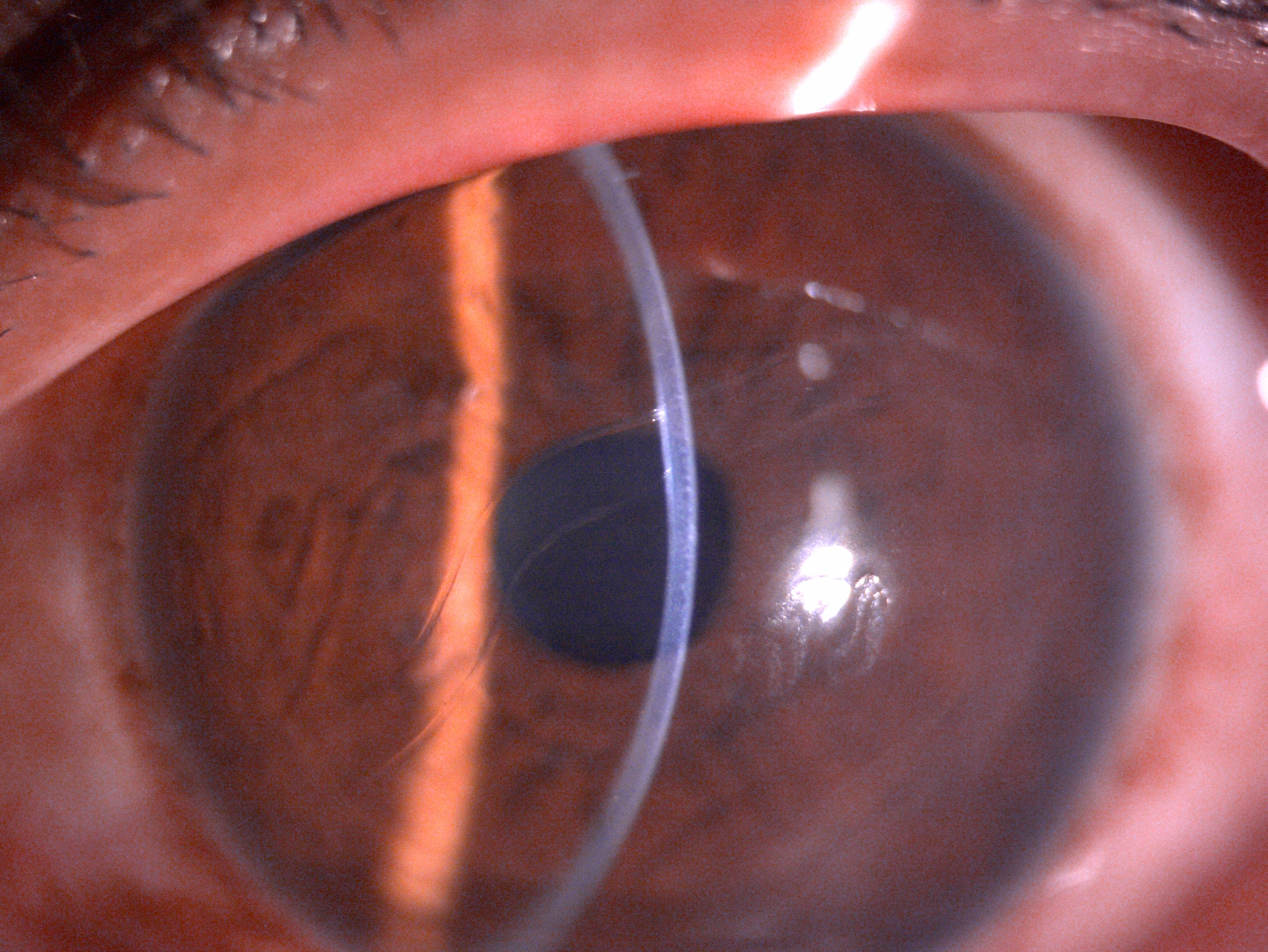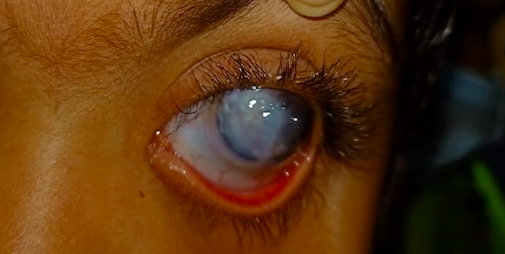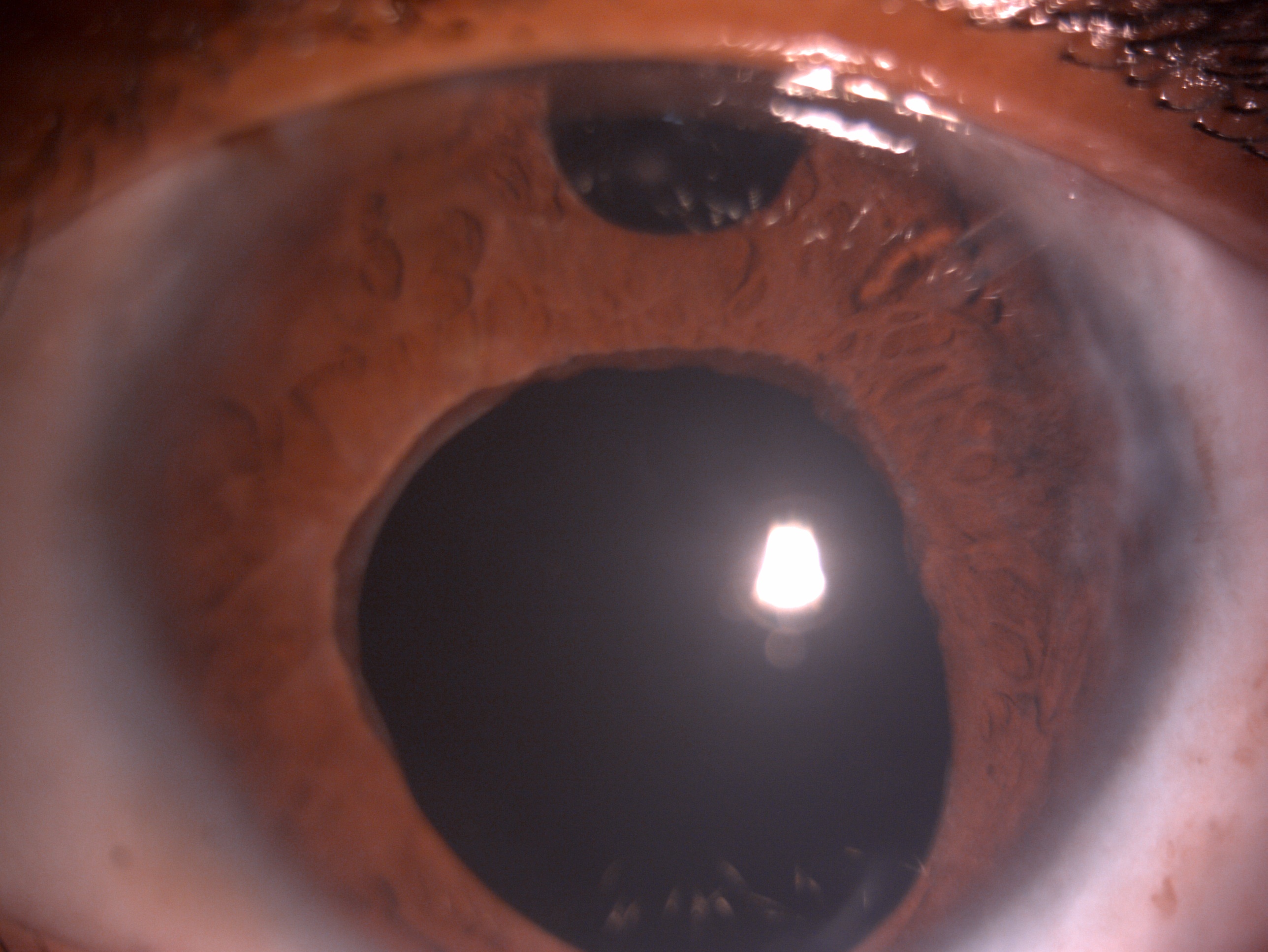[1]
Badawi AH,Al-Muhaylib AA,Al Owaifeer AM,Al-Essa RS,Al-Shahwan SA, Primary congenital glaucoma: An updated review. Saudi journal of ophthalmology : official journal of the Saudi Ophthalmological Society. 2019 Oct-Dec;
[PubMed PMID: 31920449]
[2]
Hoskins HD Jr,Shaffer RN,Hetherington J, Anatomical classification of the developmental glaucomas. Archives of ophthalmology (Chicago, Ill. : 1960). 1984 Sep;
[PubMed PMID: 6477252]
[3]
Sarfarazi M,Akarsu AN,Hossain A,Turacli ME,Aktan SG,Barsoum-Homsy M,Chevrette L,Sayli BS, Assignment of a locus (GLC3A) for primary congenital glaucoma (Buphthalmos) to 2p21 and evidence for genetic heterogeneity. Genomics. 1995 Nov 20;
[PubMed PMID: 8586416]
[4]
Fan BJ,Wiggs JL, Glaucoma: genes, phenotypes, and new directions for therapy. The Journal of clinical investigation. 2010 Sep;
[PubMed PMID: 20811162]
[5]
Ali M,McKibbin M,Booth A,Parry DA,Jain P,Riazuddin SA,Hejtmancik JF,Khan SN,Firasat S,Shires M,Gilmour DF,Towns K,Murphy AL,Azmanov D,Tournev I,Cherninkova S,Jafri H,Raashid Y,Toomes C,Craig J,Mackey DA,Kalaydjieva L,Riazuddin S,Inglehearn CF, Null mutations in LTBP2 cause primary congenital glaucoma. American journal of human genetics. 2009 May;
[PubMed PMID: 19361779]
[6]
Tamçelik N,Atalay E,Bolukbasi S,Çapar O,Ozkok A, Demographic features of subjects with congenital glaucoma. Indian journal of ophthalmology. 2014 May;
[PubMed PMID: 24881602]
[7]
Alabdulwahhab KM,Ahmad MS, Visual Impairment and Blindness in Saudi Arabia's School for the Blind: A Cross-Sectional Study. Clinical optometry. 2020;
[PubMed PMID: 33117027]
Level 2 (mid-level) evidence
[8]
Yu-Wai-Man C,Arno G,Brookes J,Garcia-Feijoo J,Khaw PT,Moosajee M, Primary congenital glaucoma including next-generation sequencing-based approaches: clinical utility gene card. European journal of human genetics : EJHG. 2018 Nov;
[PubMed PMID: 30089822]
[9]
deLuise VP,Anderson DR, Primary infantile glaucoma (congenital glaucoma). Survey of ophthalmology. 1983 Jul-Aug;
[PubMed PMID: 6353647]
Level 3 (low-level) evidence
[10]
Ohtake Y,Tanino T,Suzuki Y,Miyata H,Taomoto M,Azuma N,Tanihara H,Araie M,Mashima Y, Phenotype of cytochrome P4501B1 gene (CYP1B1) mutations in Japanese patients with primary congenital glaucoma. The British journal of ophthalmology. 2003 Mar;
[PubMed PMID: 12598442]
[11]
BARKAN O, Pathogenesis of congenital glaucoma: gonioscopic and anatomic observation of the angle of the anterior chamber in the normal eye and in congenital glaucoma. American journal of ophthalmology. 1955 Jul;
[PubMed PMID: 14388087]
[12]
Tawara A, Inomata H. Developmental immaturity of the trabecular meshwork in congenital glaucoma. American journal of ophthalmology. 1981 Oct:92(4):508-25
[PubMed PMID: 7294114]
[13]
García-Antón MT,Salazar JJ,de Hoz R,Rojas B,Ramírez AI,Triviño A,Aroca-Aguilar JD,García-Feijoo J,Escribano J,Ramírez JM, Goniodysgenesis variability and activity of CYP1B1 genotypes in primary congenital glaucoma. PloS one. 2017;
[PubMed PMID: 28448622]
[14]
Papadopoulos M,Cable N,Rahi J,Khaw PT,BIG Eye Study Investigators., The British Infantile and Childhood Glaucoma (BIG) Eye Study. Investigative ophthalmology
[PubMed PMID: 17724193]
[15]
Beck AD, Diagnosis and management of pediatric glaucoma. Ophthalmology clinics of North America. 2001 Sep;
[PubMed PMID: 11705150]
[16]
Lewis RA,Christie WC,Day DG,Craven ER,Walters T,Bejanian M,Lee SS,Goodkin ML,Zhang J,Whitcup SM,Robinson MR,Bimatoprost SR Study Group., Bimatoprost Sustained-Release Implants for Glaucoma Therapy: 6-Month Results From a Phase I/II Clinical Trial. American journal of ophthalmology. 2017 Mar;
[PubMed PMID: 28012819]
Level 1 (high-level) evidence
[17]
Ghate D,Wang X, Surgical interventions for primary congenital glaucoma. The Cochrane database of systematic reviews. 2015 Jan 30;
[PubMed PMID: 25636153]
Level 1 (high-level) evidence
[18]
Broughton WL,Parks MM, An analysis of treatment of congenital glaucoma by goniotomy. American journal of ophthalmology. 1981 May;
[PubMed PMID: 7234937]
[19]
SMITH R, A new technique for opening the canal of Schlemm. Preliminary report. The British journal of ophthalmology. 1960 Jun;
[PubMed PMID: 13832124]
[20]
Mendicino ME,Lynch MG,Drack A,Beck AD,Harbin T,Pollard Z,Vela MA,Lynn MJ, Long-term surgical and visual outcomes in primary congenital glaucoma: 360 degrees trabeculotomy versus goniotomy. Journal of AAPOS : the official publication of the American Association for Pediatric Ophthalmology and Strabismus. 2000 Aug;
[PubMed PMID: 10951295]
[21]
McPherson SD Jr,Berry DP, Goniotomy vs external trabeculotomy for developmental glaucoma. American journal of ophthalmology. 1983 Apr;
[PubMed PMID: 6837685]
[22]
Cairns JE, Trabeculectomy. Preliminary report of a new method. American journal of ophthalmology. 1968 Oct;
[PubMed PMID: 4891876]
[23]
Sidoti PA,Belmonte SJ,Liebmann JM,Ritch R, Trabeculectomy with mitomycin-C in the treatment of pediatric glaucomas. Ophthalmology. 2000 Mar;
[PubMed PMID: 10711876]
[24]
Razeghinejad MR,Kaffashan S,Nowroozzadeh MH, Results of Ahmed glaucoma valve implantation in primary congenital glaucoma. Journal of AAPOS : the official publication of the American Association for Pediatric Ophthalmology and Strabismus. 2014 Dec;
[PubMed PMID: 25459201]
[25]
al Faran MF,Tomey KF,al Mutlaq FA, Cyclocryotherapy in selected cases of congenital glaucoma. Ophthalmic surgery. 1990 Nov;
[PubMed PMID: 2270165]
Level 3 (low-level) evidence
[26]
Elhefney EM,Mokbel TH,Hagras SM,AlNagdy AA,Ellayeh AA,Mohsen TA,Gaafar WM, Micropulsed diode laser cyclophotocoagulation in recurrent pediatric glaucoma. European journal of ophthalmology. 2020 Sep;
[PubMed PMID: 31256680]
[27]
Gurnani B,Christy J,Narayana S,Rajkumar P,Kaur K,Gubert J, Retrospective multifactorial analysis of {i}Pythium keratitis{/i} and review of literature. Indian journal of ophthalmology. 2021 May;
[PubMed PMID: 33913840]
Level 2 (mid-level) evidence
[28]
Gurnani B,Narayana S,Christy J,Rajkumar P,Kaur K,Gubert J, Successful management of pediatric pythium insidiosum keratitis with cyanoacrylate glue, linezolid, and azithromycin: Rare case report. European journal of ophthalmology. 2021 Mar 28;
[PubMed PMID: 33779337]
Level 3 (low-level) evidence
[30]
Balamurugan S, Gurnani B, Kaur K, Gireesh P, Narayana S. Traumatic intralenticular abscess-What is so different? The Indian journal of radiology & imaging. 2020 Jan-Mar:30(1):92-94. doi: 10.4103/ijri.IJRI_369_19. Epub 2020 Mar 30
[PubMed PMID: 32476758]
[31]
Kaur K,Gurnani B,Devy N, Atypical optic neuritis - a case with a new surprise every visit. GMS ophthalmology cases. 2020;
[PubMed PMID: 32269909]
Level 3 (low-level) evidence
[32]
de Silva DJ,Khaw PT,Brookes JL, Long-term outcome of primary congenital glaucoma. Journal of AAPOS : the official publication of the American Association for Pediatric Ophthalmology and Strabismus. 2011 Apr
[PubMed PMID: 21596293]
[33]
Shaffer RN, Prognosis of goniotomy in primary infantile glaucoma (trabeculodysgenesis). Transactions of the American Ophthalmological Society. 1982;
[PubMed PMID: 7182965]
[34]
Kaur K, Kannusamy V, Mouttapa F, Gurnani B, Venkatesh R, Khadia A. To assess the accuracy of Plusoptix S12-C photoscreener in detecting amblyogenic risk factors in children aged 6 months to 6 years in remote areas of South India. Indian journal of ophthalmology. 2020 Oct:68(10):2186-2189. doi: 10.4103/ijo.IJO_2046_19. Epub
[PubMed PMID: 32971637]
[35]
Christy J,Jain N,Gurnani B,Kaur K, Twinkling Eye -A Rare Presentation in Neovascular Glaucoma. Journal of glaucoma. 2019 May 23;
[PubMed PMID: 31135586]
[36]
Gurnani B,Kaur K,Sekaran S, First case of coloboma, lens neovascularization, traumatic cataract, and retinal detachment in a young Asian female. Clinical case reports. 2021 Sep;
[PubMed PMID: 34484773]
Level 3 (low-level) evidence
[37]
Gurnani B,Kaur K,Gireesh P, A rare presentation of anterior dislocation of calcified capsular bag in a spontaneously absorbed cataractous eye. Oman journal of ophthalmology. 2021 May-Aug;
[PubMed PMID: 34345149]
[38]
Gurnani B,Kaur K,Gireesh P, Rare Coexistence of Bilateral Congenital Sutural and Cortical Blue Dot Cataracts. Journal of pediatric ophthalmology and strabismus. 2020 Jan 1;
[PubMed PMID: 31972045]
[39]
Kaur K,Gurnani B,Kannusamy V,Yadalla D, A tale of orbital cellulitis and retinopathy of prematurity in an infant: First case report. European journal of ophthalmology. 2021 Jun 17;
[PubMed PMID: 34137305]
Level 3 (low-level) evidence



